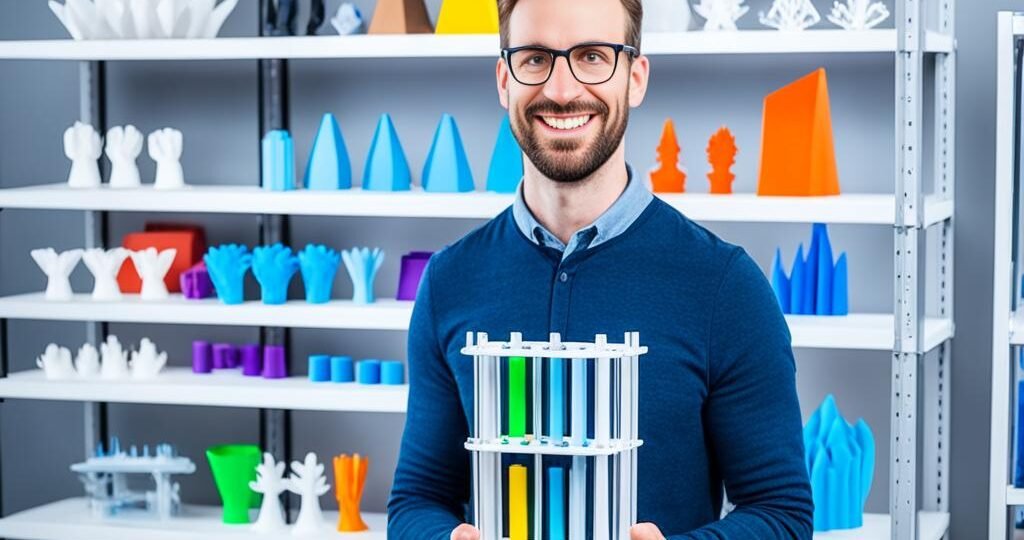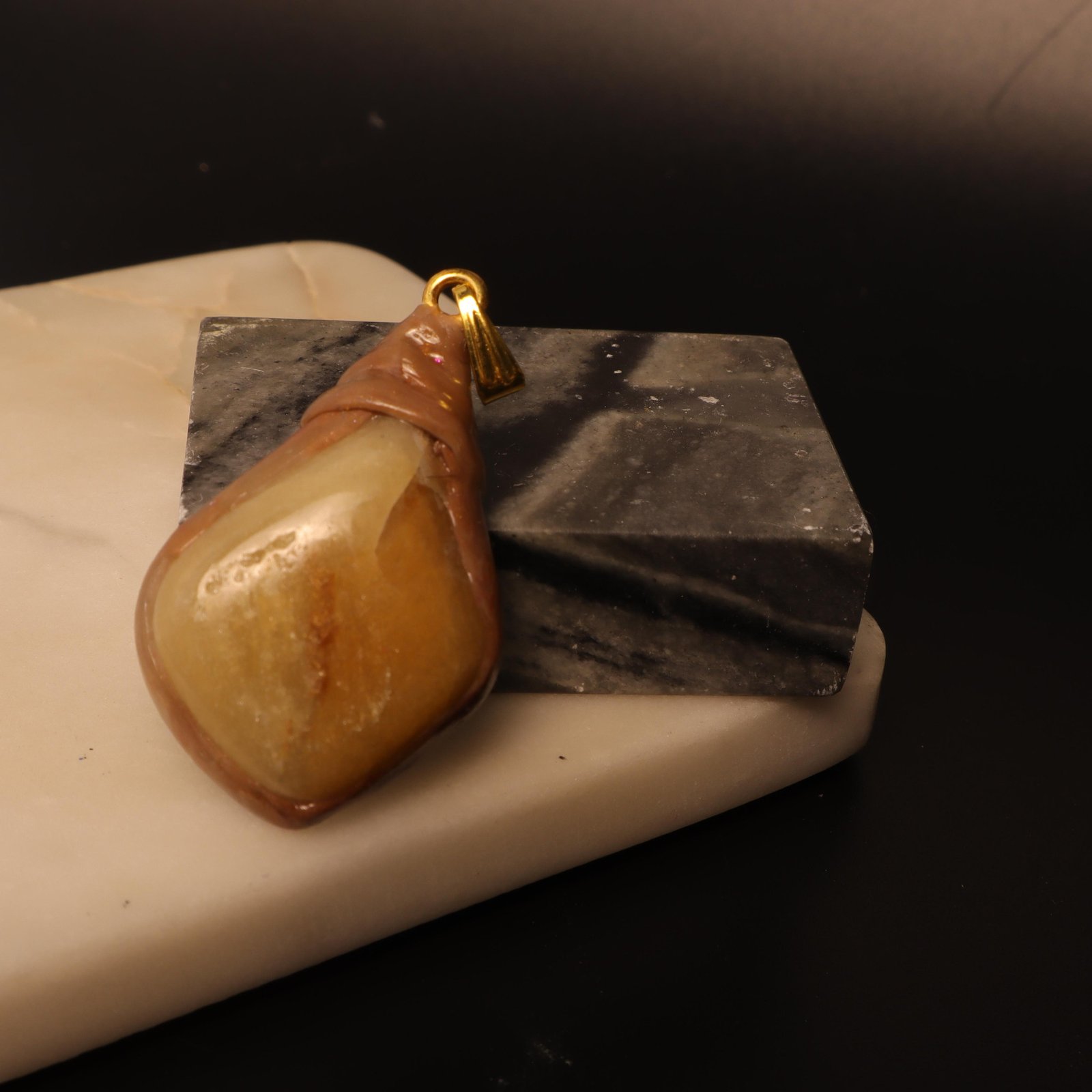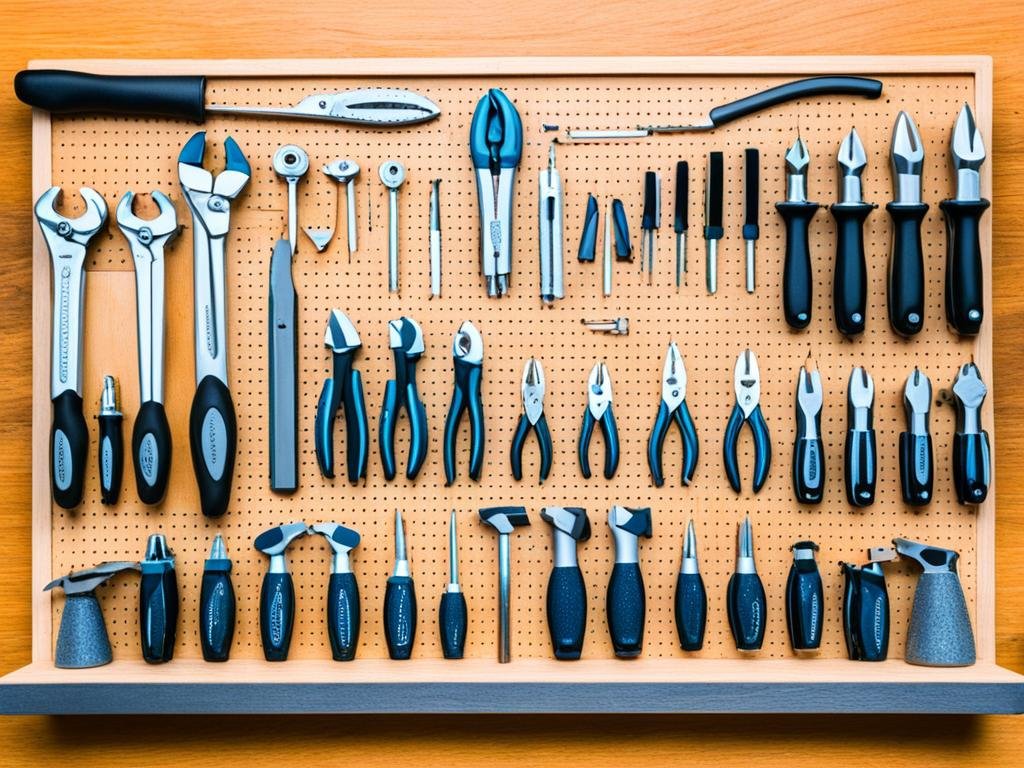
Welcome to Devil n Dove’s guide on how to choose the right 3D printing material. Whether you’re a beginner or an experienced maker, selecting the perfect material for your 3D prints can make a significant difference in the outcome of your projects. With so many options available, it can be overwhelming to know which one is best suited for your needs. But worry not, we are here to help!
When it comes to 3D printing material selection, there are several factors to consider. Determining the best material relies on understanding your specific requirements and the properties of the available options. Material properties, such as tensile strength, Young’s modulus, and impact strength, play a crucial role in determining the suitability of a material for your project. It’s essential to know how these properties affect the performance of your prints.
To make an informed decision, it’s important to familiarize yourself with the different types of materials used in additive manufacturing. Whether you prefer fused deposition modeling (FDM), stereolithography (SLA), or selective laser sintering (SLS), each technology has specific material requirements that you should consider.
Ready to dive deeper? Let’s explore the ins and outs of 3D printing materials and help you choose the perfect filament for your next project. By the end of this guide, you will have a solid understanding of the factors to consider when selecting the right material for your 3D prints.
Support us at www.devilndove.com or our store at www.devilndove.online.
Key Takeaways:
- Consider material properties such as tensile strength, Young’s modulus, and impact strength when choosing a 3D printing material.
- Familiarize yourself with the different 3D printing technologies, such as FDM, SLA, and SLS, to make an informed material selection.
- Common 3D printing materials include ABS, PLA, PETG, Nylon, TPU, PVA, and HIPS, each with its unique properties and characteristics.
- Factors to consider when choosing a material include strength requirements, material candidates, product data sheets, printer settings, part design, and skill and printer limitations.
- Evaluate the strength of different materials based on properties such as tensile strength, impact strength, and flexural strength.
Understanding Material Properties for 3D Printing
When choosing a 3D printing material, it is important to consider the material properties that will determine its performance in your specific application. Mechanical properties, such as tensile strength, Young’s modulus, elongation, flexural strength, and flexural modulus, play a crucial role in determining how a material will behave under different conditions. Thermal properties, including thermal conductivity and coefficient of thermal expansion, are also important to consider.
Standardized test methods are used to measure these material properties, providing a reliable basis for comparison between different materials. Commonly used standards, such as those developed by ASTM International, ensure consistency and accuracy in the testing process.
Understanding the material properties can help you make an informed decision when selecting a 3D printing material. By considering factors such as the desired strength, flexibility, and heat resistance of your printed parts, you can identify the material that best suits your needs.
The Importance of Mechanical Properties
Mechanical properties are a key consideration when selecting a 3D printing material. These properties define how a material responds to external forces and how it will perform in real-world applications.
“The mechanical properties of a material determine its suitability for different applications. For example, if you need a material with high tensile strength, you might consider using ABS or nylon. On the other hand, if flexibility is a priority, TPU would be a good choice.”
Standardized Test Methods
Standardized test methods ensure consistency and enable accurate measurement of material properties. These tests provide valuable data that can guide material selection and facilitate meaningful comparisons between different materials.
ASTM International is one of the leading organizations in the development and publication of test methods for various materials, including those used in 3D printing. By following these standardized test methods, manufacturers and users can obtain reliable and consistent data about material properties.
Thermal Properties
In addition to mechanical properties, it is important to consider the thermal properties of 3D printing materials. These properties determine how a material will respond to changes in temperature and heat transfer.
Thermal conductivity, for example, indicates how well a material can conduct heat. This property is crucial when selecting materials for applications that involve heat dissipation or thermal management. The coefficient of thermal expansion is another important consideration, as it affects how a material will expand or contract with changes in temperature.
By understanding the thermal properties of different materials, you can select the appropriate 3D printing material for applications that involve temperature variations or heat transfer.
Common 3D Printing Materials and Their Properties
When it comes to 3D printing, there are several common materials that offer unique properties and characteristics. Understanding these materials can help you choose the right one for your specific project. Let’s explore some of the most popular 3D printing materials and their key properties:
1. ABS (Acrylonitrile Butadiene Styrene)
ABS is known for its toughness and heat resistance. It is a versatile material that is commonly used in a wide range of applications, including automotive parts, household items, and prototypes.
2. PLA (Polylactic Acid)
PLA is a biodegradable and easy-to-print material. It offers good printability and is commonly used for concept models, artistic prints, and educational projects. PLA is not as heat-resistant as ABS but is more environmentally friendly.
3. PETG (Polyethylene Terephthalate Glycol)
PETG is a popular choice for 3D printing due to its high transparency, chemical resistance, and ease of use. It is commonly used for functional prototypes, mechanical parts, and containers.
4. Nylon
Nylon is known for its strength and durability, making it suitable for applications that require high mechanical performance. It is commonly used in aerospace, automotive, and industrial applications.
5. TPU (Thermoplastic Polyurethane)
TPU is a flexible material with good impact resistance. It offers excellent elasticity and is widely used for producing parts that require flexibility and durability, such as phone cases and shoe soles.
6. PVA (Polyvinyl Alcohol) and HIPS (High-Impact Polystyrene)
PVA and HIPS are soluble support materials used in FDM printing. They provide easy support removal for complex prints and are often used in combination with other materials.
7. Composites
Composites, such as carbon fiber and fiberglass, offer enhanced strength and stiffness. They are commonly used in applications that require high structural integrity, such as aerospace components and sports equipment.
8. SLA Resin Materials
For SLA printing, a variety of resin materials are available. These resins offer a wide range of optical, mechanical, and thermal properties, allowing for highly detailed and precise prints. They are commonly used in jewelry making, dental prosthetics, and other applications that require fine detail.
9. SLS Materials
Nylon is the most common material used in selective laser sintering (SLS) printing. It offers strength, versatility, and the ability to produce complex geometries. SLS is commonly used in automotive, aerospace, and medical industries.
| Material | Toughness | Heat Resistance | Flexibility | Transparency | Strength |
|---|---|---|---|---|---|
| ABS | High | High | Low | Opaque | High |
| PLA | Medium | Low | Low | Opaque/Translucent | Medium |
| PETG | Medium | Medium | Medium | Transparent | Medium |
| Nylon | High | Medium | Low | Opaque | High |
| TPU | Medium | Low | High | Opaque/Translucent | Medium |
Source: Devil & Dove 3D Printing Materials Guide
As you can see, each 3D printing material has its own set of properties and applications. Understanding the strengths and limitations of these materials can help you make an informed decision when choosing the right material for your next 3D printing project.
Support us at www.devilndove.com or our store at www.devilndove.online.
Factors to Consider when Choosing a 3D Printing Material
When it comes to choosing a 3D printing material, there are several important factors to consider. We’ll take you through the key considerations to help you make an informed decision:
1. Strength Requirements
Start by defining your specific strength requirements. Consider properties like tensile strength, impact strength, and flexural strength, depending on the intended use of your printed part. By prioritizing these qualities, you can narrow down your material options.
2. Material Candidates
Once you have identified your strength requirements, explore different material candidates that align with those needs. Some popular options for strength include PEEK, PEKK, polycarbonate, PET-G, and ABS, while TPU is known for its flexibility.
3. Product Data Sheets
Reading product data sheets is crucial to understanding the mechanical qualities of each filament. These sheets provide valuable insights into the specific properties and performance of different materials, enabling you to make an informed decision.
4. Printer Settings and Part Design
Printer settings and part design play a significant role in the final strength of your printed part. Optimizing printer settings, such as layer height and print speed, can enhance the strength of the material. Additionally, designing the part with proper orientation and support structures can further improve its strength and quality.
5. Skill and Printer Limitations
Consider your skill level and the limitations of your 3D printer. Some materials may require specific expertise or specialized equipment to achieve the desired results. It’s important to choose a material that aligns with your capabilities and the capabilities of your printer.
By carefully considering these factors, you can select the most suitable material for your 3D printing project, ensuring optimal strength and performance in your printed parts.
Comparison of Strength Between Different 3D Printing Materials
When it comes to 3D printing, choosing the right material is crucial to ensure the strength and durability of your printed objects. Different materials offer varying degrees of strength, making it essential to evaluate their specific properties and compare them to your desired strength criteria. In this section, we will compare the tensile strength, impact strength, and flexural strength of different 3D printing materials to help you make an informed decision.
Tensile Strength
Tensile strength measures a material’s ability to withstand pulling or stretching forces without breaking. ABS and Nylon are known for their high tensile strength, making them well-suited for applications that require robust and durable objects. These materials can handle significant loads and maintain their structural integrity.
Impact Strength
Impact strength refers to a material’s ability to resist sudden shocks or impacts without cracking or breaking. In this regard, TPU (Thermoplastic Polyurethane) is an excellent choice. TPU offers exceptional impact resistance, making it suitable for applications where objects may undergo repeated bending, twisting, or dropping.
Flexural Strength
Flexural strength refers to a material’s ability to withstand bending or deflection without fracturing. PLA and nylon are known for their high flexural strength, allowing them to withstand external forces and maintain their shape. These materials are commonly used in applications that require structural stability and resistance to deformation.
When evaluating the material properties for strength, it’s important to keep in mind that each material has its own unique characteristics. Therefore, it is crucial to compare them based on your specific requirements and consider factors such as load capacity, environmental conditions, and intended use.
Below is a table summarizing the strength comparison of different 3D printing materials:
| Material | Tensile Strength | Impact Strength | Flexural Strength |
|---|---|---|---|
| ABS | High | Moderate | Moderate |
| Nylon | High | Moderate | High |
| TPU | Moderate | Excellent | Moderate |
| PLA | Moderate | Low | High |
Utilizing this information, you can evaluate the strength properties of different materials and choose the most suitable one for your specific application. Remember to consider other factors such as cost, ease of printing, and post-processing requirements to ensure a successful 3D printing experience.
Support us at www.devilndove.com or our store at www.devilndove.online.
Choosing a Material for Your Specific Application
The choice of 3D printing material depends on the specific application. We understand that different projects have unique requirements, and selecting the right material is crucial for success. Whether you’re creating functional prototypes, concept models, jigs and fixtures, or end-use parts, the material selection plays a pivotal role in achieving the desired outcome.
For functional prototypes that require high strength and durability, materials like ABS or nylon are excellent choices. These materials offer the necessary mechanical properties to withstand rigorous testing and real-world conditions.
If you’re working on concept models or looks-like prototypes that prioritize surface finish and aesthetic qualities, materials such as PLA or SLA resins are preferred. These materials provide smooth surfaces and excellent visual appeal, making them ideal for showcasing design concepts.
When it comes to jigs and fixtures, materials with good strength and stability are essential. Polycarbonate or SLS nylon are commonly used in this application due to their reliability and ability to withstand repetitive use.
For end-use parts where functionality and performance are crucial, materials like TPU or high-performance resins are the best choice. These materials offer superior strength, flexibility, and chemical resistance, ensuring the part performs as intended in its specific application.
Choosing the right material for your specific application is critical to achieving the desired results. Consider the unique requirements of your project and select a material that aligns with those needs. This will ensure that your 3D printed parts meet the necessary performance standards and deliver exceptional quality.
Support us at www.devilndove.com or our store at www.devilndove.online.
Conclusion
Choosing the right 3D printing material is crucial in ensuring that your printed parts meet the desired properties and performance standards. By understanding the material properties and evaluating factors such as strength requirements and material candidates, you can make an informed decision for your specific application. It is important to read product data sheets to gain insights into the mechanical qualities of each filament and optimize printer settings and part design to maximize the strength of your prints. Taking into account your skill level and printer limitations further helps in choosing the most suitable material.
By carefully considering these factors, you can unlock the full potential of 3D printing technology and achieve high-quality, successful prints. Whether you are creating functional prototypes, concept models, jigs and fixtures, or end-use parts, selecting the right material is critical. Support us at www.devilndove.com or visit our store at www.devilndove.online for all your 3D printing needs.
In summary, choosing the right 3D printing material involves understanding material properties, evaluating specific requirements, reading product data sheets, optimizing printer settings and part design, and considering your skill level and limitations. By following these steps and selecting the most suitable material for your application, you can ensure the success of your 3D printing projects and unlock the limitless possibilities of this innovative technology.
FAQ
What factors should I consider when choosing a 3D printing material?
When choosing a 3D printing material, it’s important to consider factors such as strength requirements, material candidates, product data sheets, printer settings and part design, and your skill level and printer limitations.
What are the important material properties for 3D printing?
The important material properties for 3D printing include tensile strength, Young’s modulus, elongation, flexural strength, flexural modulus, impact strength, and more. These properties can be measured using standardized test methods and are typically listed on datasheets provided by manufacturers.
What are some common 3D printing materials and their properties?
Some common 3D printing materials include ABS (known for toughness and heat resistance), PLA (easy to print and biodegradable), PETG (high transparency and chemical resistance), Nylon (strength and durability), TPU (flexibility and impact resistance), PVA and HIPS (soluble support materials), and various composites, SLA resins, and SLS nylon.
How can I compare the strength of different 3D printing materials?
You can compare the strength of different 3D printing materials by evaluating their tensile strength, impact strength, and flexural strength. These properties reflect how a material will behave under different conditions and can help determine its suitability for specific applications.
How do I choose the right 3D printing material for my specific application?
The choice of 3D printing material depends on the specific application. For functional prototypes, materials with high strength and durability may be suitable. For concept models or looks-like prototypes, materials with good surface finish and aesthetic qualities may be preferred. When it comes to jigs and fixtures, materials with good strength and stability are commonly used. For end-use parts, where functionality and performance are crucial, materials with the desired properties may be the best choice.
Source Links
RELATED POSTS
View all



